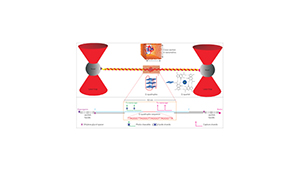
Researchers at Kent State University and Kyoto University published work this week describing the genetic factors that help turn healthy cells into cancerous cells. The team’s work was published in Nature Nanotechnology.
“Traditionally, DNA has a 2-strand shape — the double helix — and its purpose is to code the proteins that form life,” co-author Hanbin Mao said in prepared remarks. “But recently, people have discovered that some DNA has 4 strands, and we call this the G-quadruplex. This is associated with the inhibition of cancer cells.”
Although it’s helpful that G-quadruplex DNA inhibits cancer cells, some strands mutate and enable cancer cell profileration, according to the team. To better understand this phenomenon, the researchers had to learn why DNA turns into 4-stranded structures in the 1st place.
All DNA strands are generated by enzymes that operate like an assembly line. At some point, DNA either forms a double helix or a G-quadruplex. This formation process happens inside nanometer-sized spaces within the enzymes, Mao said.
Until now, researchers have been unable to mimic these spaces in a laboratory setting, which ultimately limited deeper study of the G-quadruplex formation process.
The team said they created a “nano cage” to study how DNA folded into different shapes inside.
“It’s easier for the DNA to fold inside the cage,” Mao said. “It folds to adapt to the small space, and here DNA naturally folds into the G-quadruplex.”
The process happens 2 to 3 orders of magnitude faster inside the cage than outside.
“With that observation, we may follow the fate of the cell to be cancerous or healthy,” he said. “So we can perhaps learn how to introduce molecules or chemicals to interfere with that process.”
